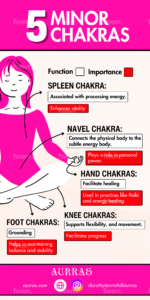If you have ever done any meditation, even one time, you were most likely looking for some guidance on how to get started and what to do. At that point, you may have noticed different types or approaches to meditation. You don’t have to be pursuing meditation for very long before you start noticing there are almost as many approaches to it as there are people who facilitate it.
If you feel unclear about the different methods and which one is right for you, I’ve tried to summarize the primary types in this overview. Despite the descriptions, you need to try different methods to determine the most effective ones for you. I did find several I didn’t include simply because the technique was already described but only the method title changed. I didn’t feel those were a distinction worth keeping.
I think you must understand a few things about what you are trying to accomplish with meditation as you review this list.
- Meditation is about focusing your attention on the present moment. These methods are all designed to help you focus on the present.
- There is no “one” perfect way for you to meditate although you may discover your needs when you are beginning are different as you gain experience.
As you gain experience, you may discover you prefer one method over another. - Different meditation facilitators use meditation methods based on a variety of things including their own familiarity, what they believe works with their intention, and what they may know about the audience. They won’t outline their method(s) in advance generally but rather you tend to discover that as the meditation unfolds.
- Because different meditation facilitators tend to use specific methods consistently, it may be the method, rather than the facilitator that creates your preference.
- Mindfulness Meditation: Focuses on being present in the moment, observing thoughts and sensations without judgment.
- Transcendental Meditation (TM): Involves silently repeating a mantra to achieve a state of relaxed awareness.
- Guided Meditation: Involves following the instructions of a teacher or recorded voice to imagine a relaxing scene or experience.
- Loving-kindness Meditation (Metta): Cultivates feelings of compassion and love towards oneself and others.
- Body Scan Meditation: Involves systematically focusing attention on different parts of the body, promoting relaxation and body awareness.
- Zen Meditation (Zazen): Focuses on posture and breath awareness, often practiced in a seated position.
- Yoga Meditation: Combines physical postures (asanas) with breath control and meditation, as part of traditional yoga practice.
- Vipassana Meditation: Involves observing sensations, thoughts, and feelings with equanimity to gain insight into the nature of reality.
- Chakra Meditation: Focuses on aligning and balancing the body’s energy centers, known as chakras. Practitioners often visualize these energy centers or use specific sounds or mantras.
- Mantra Meditation: Involves the repetition of a word, phrase, or sound (mantra) to focus the mind and reach a deep state of meditation.
- Tonglen Meditation: A Tibetan Buddhist practice where one visualizes taking in the suffering of others and sending out compassion and healing.
- Qigong Meditation: Combines meditation, controlled breathing, and movement exercises to cultivate and balance the body’s energy (Qi).
- Visualization Meditation: Involves focusing on an image or scene, often one that brings peace or comfort, to deepen concentration and relaxation.
- Sound Meditation: Uses external sounds, like singing bowls, gongs, or specific frequencies, to help focus the mind and bring about a state of relaxation or healing.
- Kundalini Meditation: Aims to awaken the dormant energy (Kundalini) at the base of the spine and guide it through the chakras to achieve spiritual enlightenment.
- Walking Meditation: Combines movement with mindfulness, focusing on the experience of walking, the sensations in the feet, and the environment.
- Progressive Relaxation: Involves tensing and then slowly releasing each muscle group in the body to promote relaxation.
- Mindful Breathing (Anapanasati): Involves focusing on the breath as it moves in and out of the body, often counting breaths or paying attention to the sensations of breathing. Focuses on breathing in and out at specific rhythms to synchronize the heart and breath, often to cultivate emotional balance.
For those who are interested in my practices and why I select what I do, here are my meditation methods and my rationale for doing them under specific situations.
Sound Meditation – This is the core of what I do as a sound healer. The sound and frequency deepen your meditation regardless of what type it is, therefore, it will always be there. In addition to the physical and mental benefits sound provides, in the meditation it gives you something to focus on.
Body Scan combined with Mindful Breathing – During my in-person sound baths and short sound bath I use mindful breathing focused on specific areas of the body to aid in de-stressing and to provide focus. I do this combination method for short sound bath & meditations for quick mind and body relief and for in-person sound baths because the audience generally wants to focus on the sound without the interference of voice.
Guided meditation – I do this type in my full-length, online sound baths for a few reasons. I believe the auditory setup of using earbuds or headphones along with a person’s personal space makes it more conducive to subconscious reprogramming. Each sound bath & meditation not only has personally curated frequencies for the topic, but the topic has the intention to powerfully transform a person. The messages of the guided meditation combined with frequency, binaural beats, and meditation are a perfect combination for significant personal change.
I hope you find this guide useful to your meditation practice.






